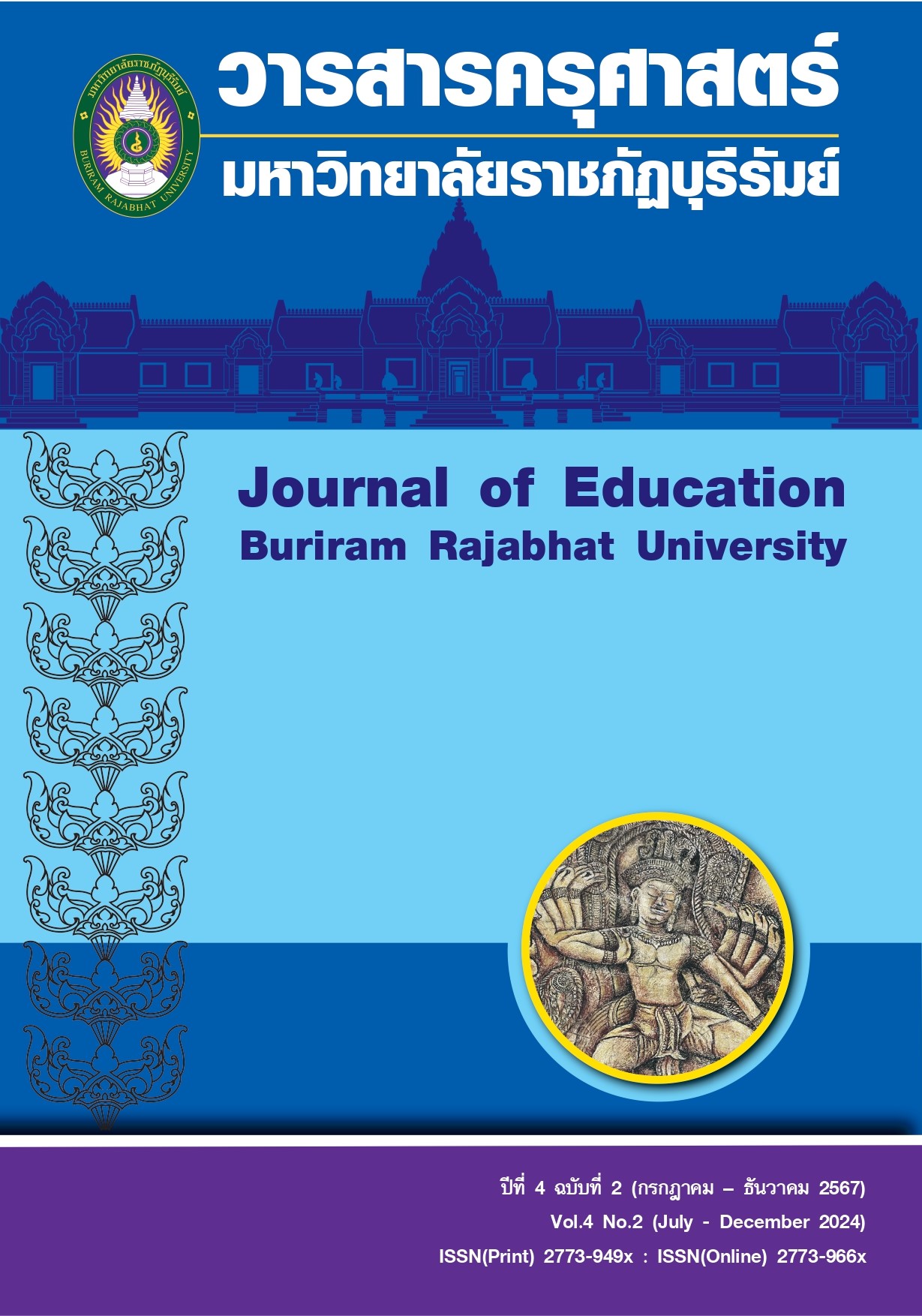Using Physics to Analyze the Movement of the Petanque Ball and Calculate Its Accuracy
Main Article Content
Abstract
This article presents the application of force calculation and distance measurement in petanque, a sport that requires precision in throwing the ball as close to the target as possible. The study focuses on the analysis of projectile motion, using physics equations to calculate the initial force, velocity, and appropriate throwing angle The results show that factors such as friction from the court surface, initial velocity, and throwing angle affect the movement of the petanque ball and the distance at which it will stop In Additionally, the selection of court types, such as gravel, clay, and grass courtswith different friction forces, and the use of distance measurement tools, such as tape measures and friction measurement devices, are discussed friction measurement devices. This article aims to provide a deeper understanding of the calculations and distance measurementsin petanque and proposes guidelinesfor developing players' skills using physical data playing and training efficiency.
Downloads
Article Details
บทความที่ได้รับการตีพิมพ์ลิขสิทธิ์เป็นของวารสารครุศาสตร์ มหาวิทยาลัยราชภัฏบุรีรัมย์ อนุญาตให้เผยแพร่เพื่อการศึกษาและวิจัย ในวงการวิชาการ ไม่อนุญาตการใช้ประโยชน์เพื่อการแสวงหากำไร
ข้อความที่ปรากฏในบทความเป็นความคิดเห็นส่วนตัวของผู้แต่ง ซึ่งวารสารครุศาสตร์ มหาวิทยาลัยราชภัฏบุรีรัมย์ ได้ประเมินคุณภาพตามหลักวิชาการ ผลกระทบอันเกิดจากความคิดเห็นของผู้แต่งเป็นความรับผิดชอบของผู้แต่งเอง
References
จิตติ ชนะฤทธิชัย, สุรสีห์ ฉิ่งถิน, พราม อินพรม, และ ศักดิ์ชาย พิทักษ์วงศ์. (2555). “การศึกษาการบริหารจัดการสนามกีฬาองค์การบริหารส่วนจังหวัดแพร่.” Journal of Education and Innovation, 14(2), Article 2.
จุฑามาศ ช้างคำ, ปิยรัตน์ มูลศรี, และ อาทิตย์ หู้เต็ม. (2565). “แบบจำลองการเคลื่อนที่แบบโพรเจกไทล์ ภายใต้แรงภายนอกที่ขึ้นอยู่กับเวลา.” วารสารวิจัยและพัฒนา วไลยอลงกรณ์ ในพระบรมราชูปถัมภ์ สาขาวิทยาศาสตร์และเทคโนโลยี, 17(2), Article 2.
ณิชากร ปทุมรังสรรค์, และ กิตติยา ปัณษา. (2565). “การจัดการเรียนรู้ตามแนวทางสะเต็มศึกษาเรื่องแรงเสียดทานเพื่อพัฒนากระบวนการออกแบบเชิงวิศวกรรมของนักเรียนชั้นประถมศึกษาปีที่ 5.” Muban Chombueng Rajabhat University Research Journal (Humanities and Social Science), 10(1), Article 1.
ธนวรรณพร ศรีเมือง, ธีระศักดิ์ วรรณสา, และ พินิจ ชัยศิรินทร์. (2564). “ผลของการใช้ยางยืดออกกําลังกายเพื่อฝึกความแข็งแรงกล้ามเนื้อของแขนที่มีผลต่อความแม่นยําในการโยนลูกเปตองของนักกีฬาเปตองมหาวิทยาลัยราชภัฏมหาสารคาม”. Journal of Education Rajabhat Maha Sarakham University, 18(1), Article 1.
นนทรัฐ บำรุงเกียรติ, และ พีรญา เต่าทอง. (2564). “โปรแกรมคอมพิวเตอร์วิทัศน์เพื่อการตรวจสอบความถูกต้อง ของท่าออกกำลังกายสควอซ.” Wittayasara: Integration Apply Engineering and Industrial Technology, 14(2), Article 2.
นัท กุลวานิช, และ อัครินทร์ ไพบูลย์พานิช. (2562). “การเปรียบเทียบมาตรวัดระยะห่างในการวิเคราะห์การจัดกลุ่มสำหรับข้อมูลอนุกรมเวลา.” Thai Science and Technology Journal, 27(6), 1002–1014.
บุญตา ค้าขาย, ยุพาพร สุวะไกร, ประเวท เกษกัน, กิตติกุล รัตนรังสีกุล, & กิตติพงษ์ เพ็งศรี. (2567). “การวิเคราะห์มุมและการจำลองการทำงานไดนามิกส์ข้อต่อในการวิ่งระยะสั้นของนักกรีฑาเยาวชนทีมชาติไทย.” Thai Journal of Health, Physical Education and Recreation, 50(1), Article 1.
ลัดสะหมี คุณพะจันสี, ภัทราพร เกษสังข์, และ วิทย นาควิเชียร. (2557). “ปัจจัยที่ส่งผลต่อผลสัมฤทธิ์ทางการเรียนวิชาคณิตศาสตร์ของนักเรียนชั้นมัธยมศึกษาปีที่ 4 ในโรงเรียนสังกัดแผนกศึกษาธิการและกีฬาแขวงหลวงพระบางสาธารณรัฐประชาธิปไตยประชาชนลาว.” Research and Development Journal, Loei Rajabhat University, 9(29), 59-71.
วิมณเทียร เพาะบุญ, และ วรพงษ์ แย้มงามเหลือ. (2023). “The Norms – Referenced of Physical Fitness for Basketball Referee of Thai Basketball Professional Association.” Thai Journal of Health, Physical Education and Recreation, 49(2), Article 2.
ศิขร โล่ห์พงค์, สุนทรา กล้าณรงค์, และ วิไลพิน ทองประเสริฐ. (2558). “ผลของการฝึกความแข็งแรงของกล้ามเนื้อแขนท่อนล่างโดยวิธีฝึกด้วยดัมเบลที่มีต่อความแม่นยำในการตีลูกเปตอง.” Princess of Naradhiwas University Journal, 7(1), Article 1.

